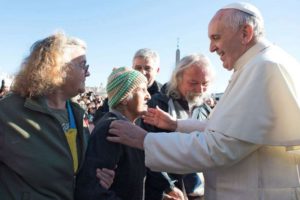THE PROPHETIC DIMENSION OF OUR CHARISM IN THE WORLD
OF HEALTHCARE
Most hospital chaplains know their job and how to go about it. Most of us know that we could and should be much better at what we are doing, and that we can always learn more and be enriched by new insights. You cannot be taught how to be a hospital chaplain, but you most certainly can be helped to be a more effective one through greater self-knowledge and knowledge of the human sciences. However, it is important that we don’t become too engrossed too engrossed in theory and in the process lose contact/touch with the stress and trauma encountered at the coalface of an ever changing hospital ministry.
I believe that these days together should be characterised by sharing honestly the reality, the difficulties, challenges and what exactly it is that helps us to keep going. So I hope that I can be authentic in this presentation, as I reflect on my own life, and my motivation in the light of the reality I see around me at this moment in the history of the Order and of my own wee province, and my personal response to it all.
I see before me chaplains from the four corners of the world. And as I look out at you I am very aware that the reality of chaplaincy ministry as exercised in Africa, South America or Asia is light years away from that of Europe and North America. I am sure that this issue will surface strongly in the group work and perhaps in other presentations. What unites us all however, is that our Camillian Charism has to be the driving force for all of us as we seek to meet the challenges presented to us by the diverse cultural surroundings in which we work. Our charism is one of our main sources of motivation for doing what we do and never changes. How we express that charism will be constantly changing depending on the reality we have to encounter. Values don’t change while structures must, and our charism is one of our central values.
I am called to be prophetic where I am planted. Yes, the charism will find various different expressions because of the reality of the environment in which we have to minister, but the source of our motivation will be our charism. And I need to remember that by the very nature of my religious profession I am called to be prophetic.
Motivation is of paramount importance if we are to be prophetic. We should never lose sight of the fact that our ministry must always have a strong evangelising dimension, which if missing means we are not doing our work, that we are no longer in mission. We should always be on guard against losing our sense of mission as “when we are clear about the why we can face any how” (V. Frankl). This happens when our identity and motivation are clear. The fact that we are involved in pastoral activity does not of itself mean we are involved in ministry. We are involved in ministry “when both our lives and our actions spontaneously indicate and promote the Kingdom of God” (M. Amalodoes).
If we are true to our charism our ministry will always have an evangelising dimension. So a very pertinent question for all of us is to ask ourselves just how alive is that charism for each one of us right now? Do we burn inside like Camillus?
The healthcare world offers us enormous possibilities for evangelisation. More people pass through the doors of a hospital in a day than through the doors of a Church in a week. No one escapes being hospitalised or of having to visit somebody who is there. Did Camillus not see the hospital as “the mystical vineyard of the Lord” where the “sick are our Lords and masters”
ROME – THE CHURCH OF ST. MARY MAGDALENE
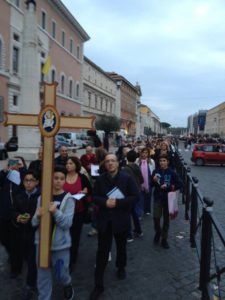 Jubilee of the Parish of ‘St. Camillus’
Jubilee of the Parish of ‘St. Camillus’
On Saturday 5 November the Parish of ‘St. Camillus de Lellis’ celebrated the Jubilee of the Holy Year of Mercy ‘in the footsteps’ of St. Camillus, starting from the Church of St. Mary Magdalene and ending at the ‘Holy Door’ of St. Peter’s Basilica.
Jubilee of the Homeless
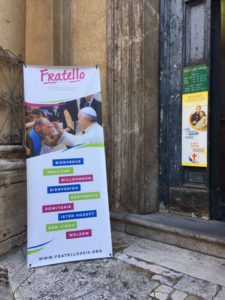


The Feast Day of Our Lady of Health
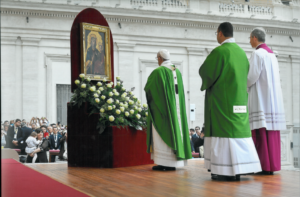


8 December – Solemnity of the Immaculate Conception of Mary
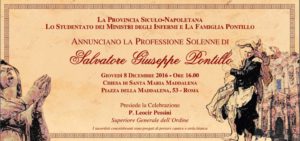


At 16.00, Fr. Leocir Pessini will preside over the celebration of the Eucharist, during which the young Camillian religious Giuseppe Salvatore Pontillo, of the Province of Sicily and Naples, will make his perpetual vows.
Formula of life of the Ministers of the Sick (1599)
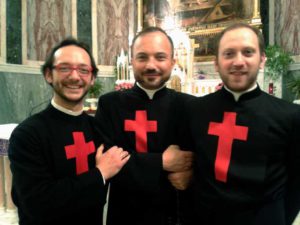


He will do all for the true love of God and as penance for his sins: remembering the Truth, Jesus Christ, who says “insofar as you did this to one of the least of these brothers of mine, you did it to me”; and also elsewhere: “I was sick and you visited me, come to me all you blessed, inherit the kingdom prepared for you from the creation of the world”. The Lord also says: “For the same measure you measure it will be measured back to you”.
Therefore he who has been thus inspired by the Lord, should consider the sense of such perfect truth, regard this extraordinary means to attain the precious “pearl of charity”, of which the holy Gospel says: “the man who found it, put up for sale all that he had and bought it”. Therefore this “pearl of charity” is that which transforms us in God and purifies us of every strain of sin, because: “charity covers a multitude sins”.
Everyone, therefore, who would like to join our Institute, should know that he must die to himself, if he is given such a great grace by the Holy Spirit and should not worry about death nor life, neither infirmity nor health, but entirely dead to the world, he should give himself completely to the will of God, under perfect obedience to his superiors, giving up totally of his will. He should consider it a great gain to die for the crucified Jesus Christ our Lord, who says: “there is no greater love than to give one’s life for one’s friends”…
Thus renewed he should prepare to suffer a great deal for the glory of God, for the salvation of his own soul and that of his neighbour.
CADIS – BANGKOK



ROME – THE INTERNATIONAL CONFERENCE OF CAMILLIAN CHAPLAINS
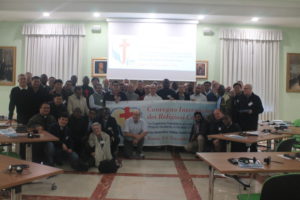


Read here the accounts of the first, second and third days of the conference and the FINAL DOCUMENT.
TAIWAN
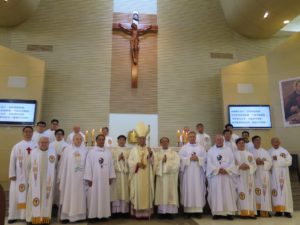


On 29 October, as the last appointment for the Holy Year of Mercy, the Jubilee of Students of the whole of the area of Ilan was celebrated in the Church of St. Camillus in Lotung. More than two hundred people took part, almost all of whom were young. Many activities were engaged in during the afternoon in order to have a deeper understanding of the meaning of the Year of Mercy. On 12 November, the Holy Door of our Church of St. Camillus was closed. The bishop of the diocese had made it a jubilee church. During the course of the Holy Year thousands of people had passed through this door.
PHOTOGRAPHIC GALLERY
THE PROVINCE OF SICILY AND NAPLES
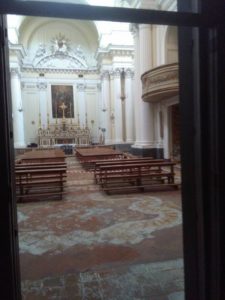


An expression of thanks to Fr. Alfredo Tortorella and his group of volunteers who organised the work for the reopening of this church.
THE PROVINCE OF THE PHILIPPINES
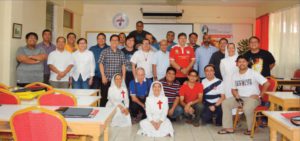


Download here the new edition of CamUp – the review of the Province of the Philippines
ROME
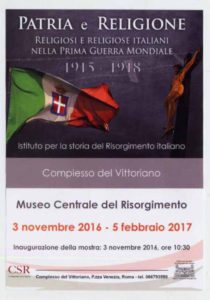


About 9,400 Italian religious took part in the Great War from over 40 Congregations. 572 of them became officers, 592 were military chaplains, 362 were wounded, 320 died in the war, and 376 were decorated.
This initiative, the idea of Fr. Giancarlo Rocca, a Pauline and scholar of consecrated life, who also gave a major impulse to the exhibition, is the outcome of the happy cooperation of various religious institutions.
Amongst these there could not fail to be the Order of the Ministers of the Sick (Camillians) which ever since the wars of independence has been with its religious on battlefields at the side of the wounded and the dying.
Pictures and texts make up the fifty-one panels which are on show inside the halls of the Museum of the Risorgimento. The visitor reads anew the events of a hundred years ago as a stage of profound change in realities and awareness.
This is done through the faces and the histories of the very many men and women religious who lived their witness to faith both in hospital services, at the side of men who were wounded and often died because of of the fighting, and as combatants.
Indeed, about ten thousand religious were called to serve in the war and many of them underwent the terrible experience of the trenches, thereby facing questions that affected their most intimate and personal choices.
Especially touching and moving are the testimonies that were written by some of them who, although united in faith, were enemies in war and were forced to kill each other, not of their own free will but because they had to, obeying the atrocious rules of the conflict. One can well imagine the devastation that their consciences had to endure.
Specifically for these reasons, at the end of the First World War the Holy See, by a decree of 15 October 1918 issued by the Sacred Consistorial Congregation, established that all ecclesiastics (priests, seminarians and lay brothers of religious institutes) who had taken part in the war had to follow a course of spiritual exercises before returning to their places of service in order to attend to their consciences and deal with their war experiences. In the gravest cases, it was possible to address the Holy See.
The esteem and gratitude won by the various religious Orders, both male and female, because of the contribution that they made at the front by providing physical and spiritual care to the sick in a terrible context of death and pain, very often paying with their own lives, was notable (Luciana Mellone – the Camillian general archives).
THE PROVINCE OF BRAZIL
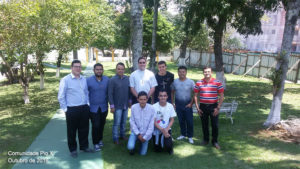


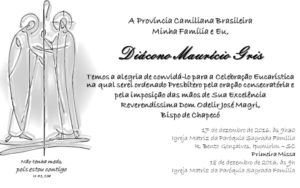


THE DELEGATION IN KENYA
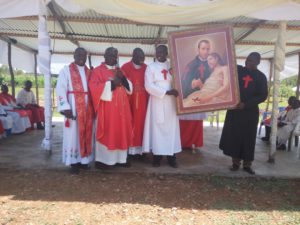


PHOTOGRAPHIC GALLERY
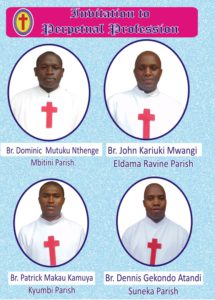


THE VICE-PROVINCE OF PERU
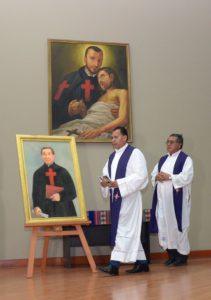


‘See, now they vanish, the faces and places, with the self which, as it could, loved them. To become renewed, transfigured, in another pattern’ (T.S. Eliot)
GIUSEPPE VILLA CERRI
(1933-2016)
Read here the obituary and the vivid memory of Giuseppe Villa Cerri as expressed by the religious of the Vice-Province of Peru.
‘Now they live in Christ whom they met in the Church, followed in our vocation, and served in the sick and the suffering. Trusting that the Lord, the Holy Virgin our Queen, St. Camillus, the Blessed Luigi Tezza the Blessed Giuseppina Vannini, and our deceased religious brothers and sisters, will welcome them in their midst, we commend them in our prayers, remembering them with affection, esteem and gratitude’.
PHOTOGRAPHIC GALLERY
THE PROVINCE OF SPAIN
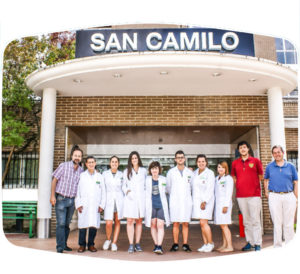


More than 600 people will take part in the XII Jornadas sobre Duelo organised by the Centro de Humanización de la Salud on 16-17 November.
This time the seminars will take place on a single day, with Friday left for other activities centred around a round table, with the study of real cases accompanied by Marisa Magaña, the director of the centre for listening; a paper on attachment and detachment; and a special activity that will pay tribute to all the participants.
The following will take part in this day as speakers: José Carlos Bermejo, the Director of the Centro de Humanización de la Salud; Marisa Magaña, the head of the St. Camillus CE; Valentín Rodil, the head of Unidad Móvil de Intervención (UMI) Del Centro de Escucha; Alejandro Rocamora, a psychiatrist; Marta Villacieros, the head of the investigation section of the CEHS; Silvia Chaves, the President of the Association of Accident Victims of Germanwings; and Sara Castro, of the CE of Zamora, or Montserrat Esquerda.
ROME – CAMILLIANUM
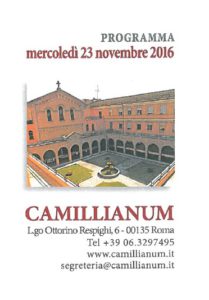


Wednesday 23 November 2016
At the chapel of Villa Sacra Famiglia there will be a concelebration of the Eucharist presided over by Fr. Leocir Pessini, the General Moderator of the Camillianum. This will be followed in the ‘Emidio Spogli’ Aula Magna by the greetings of the General Moderator, Fr. Leocir Pessini, and a report on the academic year given by Prof. Palma Sgreccia, the Dean of the Camillianum. The Lectio Magistralis on ‘Amoris Laetitia. Reflections on Education and Love’ will then be given by H.R.E. Msgr. Enrico dal Covolo, the Rector of the Pontifical Lateran University.
THE DIARY OF THE SUPERIOR GENERAL
On 13-20 November, Fr. Leocir Pessini will visit the Camillian communities of the Province of Germany in Germany and Holland.
On 23-25 November he will take part in the six-monthly meeting of the Union of Superior Generals in Rome.
On 23 November to 4 December, together with Fr. Cipriano, he will visit the Camillian religious of Haiti.
On 9-12 December, with Fr. Laurent Zoungrana, he will meet the Camillian religious of the community of Lourdes (France).
THE EXTRAORDINARY JUBILEE OF MERCY
POPE FRANCIS
Mercy and Inclusion
At this last Saturday jubilee audience I wold like to describe an important aspect of mercy – inclusion. Indeed, God, in His design of love, does not want to exclude anyone; He wants to include everyone. For example, through baptism He makes us his children in Christ. And we Christians are invited to use the same criterion: mercy is that way of acting, that style, by which we seek to include others in our lives, avoiding closing up in ourselves and our selfish certainties.
In the passage from the Gospel of Matthew that we have just listened to, Jesus makes a truly universal invitation: ‘Come to me all of you are weary and heavy-laden, and I will give you rest’ (11:28). Nobody is excluded from this appeal because the mission of Jesus is to reveal to every person the love of the Father. It is our task to open our hearts, to trust Jesus and to welcome this message of love which makes us enter the mystery of salvation.
This aspect of mercy – inclusion – is expressed in opening our arms so as to welcome without excluding; without classifying other people on the basis of their social condition, language, race, culture, religion: in front of us there is only a person to be loved as God loves that person. The person whom I find in my work, in my neighbourhood, is a person to be loved, as God loves. “But he is from that country, another country, that religion, of another…He is a person who loves God and I must love him”. This is to include, and this is inclusion.
How many tired and heavy-laden people do we meet today as well! In the street, in public offices, in clinics…The gaze of Jesus rests on each one of those faces, through our eyes as well. And how are our hearts? Are they merciful? And is our way of thinking and behaving inclusive? The Gospel calls us to recognise in the history of humanity the design of a great work of inclusion which, fully respecting the freedom of every person, of every community, of every people, calls everyone to form a family of brothers and sisters, in justice, in solidarity and in peace, and to be a part of the Church, which is the body of Christ.
How true are the words of Jesus who invites those who are tired and heavy-laden to come to him to find rest! His arms stretched out on the cross demonstrate that nobody is excluded from his love and mercy, not even the greatest sinner! We are all included in his love and his mercy. The most immediate expression with which we feel welcomed and placed in him is his forgiveness. We all need to be forgiven by God. And we all need to meet brothers and sisters who help us to go to Jesus, to open ourselves to the gift that he made us on the cross. Let us not obstruct each other! Let us not exclude anyone! Indeed, with humility and simplicity let us make ourselves an instrument of the inclusive mercy of the Father! The inclusive mercy of the Father: that is the way it is. The Holy Mother Church prolongs in the world the great embrace of Christ who died and rose again. This square, with its colonnade, also expresses this embrace. Let us involve ourselves in this movement of inclusion for others, to be witnesses to the mercy with which God has welcomed, and welcomes, each one of us!


